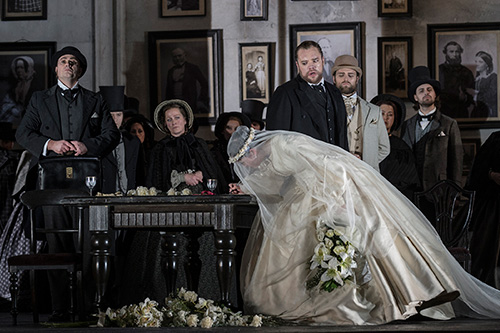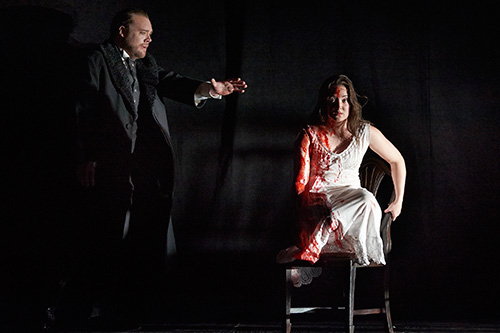-
Bel Canto At Its Best: David Alden Discusses Lucia di Lammermoor
By Danielle D'OrnellasPosted in 2012/2013By Suzanne Vanstone, Senior Communications Manager, Editorial

Gothic romance. Scottish wildness. Early-Victorian repression. Director David Alden showcases his riveting production of Donizetti’s opera Lucia di Lammermoor at the COC this spring. Based on Sir Walter Scott’s The Bride of Lammermoor, the opera follows a young girl’s descent into madness. Lucia is embroiled in a conflict between her brother, Enrico, and her lover, Edgardo. Barely a woman, she is treated as a mere possession, and those who should have her best interests at heart are the same culprits who gradually chip away at her fragility.
Internationally renowned director David Alden is excited about mounting this production in Toronto and directing in our opera house for the first time. “Lucia is amazing – it’s one of the very strongest pieces in the bel canto repertoire. This production is set in the early-Victorian period, where society was very strong, rigid, hierarchical and patriarchal. Obviously underneath those rigid codes and societal structures there was passion and love and madness which burst through these very strong repressions. That’s what this opera is all about.
“Implicit in this work is the terrible buildup of tension on Lucia – the slow hammering away of a girl who is really just a child. She is totally isolated with her brother, and there is almost an Edgar Allan Poe sense of an incestuous brother-sister relationship which is close and passionate, but turns violent and explodes into madness.”

Alden says that madness was often the climax of operas from that period, but to not mistake madness and florid cadenzas as superficial. He says that the stereotypical view of Donizetti operas, especially Lucia, as purely bel canto vehicles for the “canary” of the day is somewhat outdated. Certainly the music exploits the beauty and flexibility of what the human voice can accomplish, but he maintains that Lucia is a very well written piece of drama and there is nothing frivolous or amusing about the madness. “Donizetti was a storyteller and Donizetti was a theatre person – the dramaturgy is very tight.
“I have always taken the musical aspect of this opera very seriously. There are no cuts in the production. Lucia has been abused over the decades, the structure of it not taken seriously. Obviously there is a certain freedom in the bel canto music which is part of the tradition, but we are getting back to the basics.” He says the overall structure of this piece is brilliant. The tension keeps mounting, first with Enrico, who then turns it upon his sister and the manipulation becomes more desperate and extreme. Alden says, “The final eruption into the mad scene is justly famous because it’s incredibly well timed. It’s very shocking but it’s also deeply satisfying. The audience is released into this other dimension, the way Lucia is released into another corner of her mind.”
This article is published in our spring house program. Click here to read the issue online.
Photos: (top) A scene from the Canadian Opera Company’s production of Lucia di Lammermoor, 2013. Photo by Chris Hutcheson; (middle) Brian Mulligan as Enrico and Anna Christy as Lucia in the Canadian Opera Company’s production of Lucia di Lammermoor, 2013. Photo by Michael Cooper.
